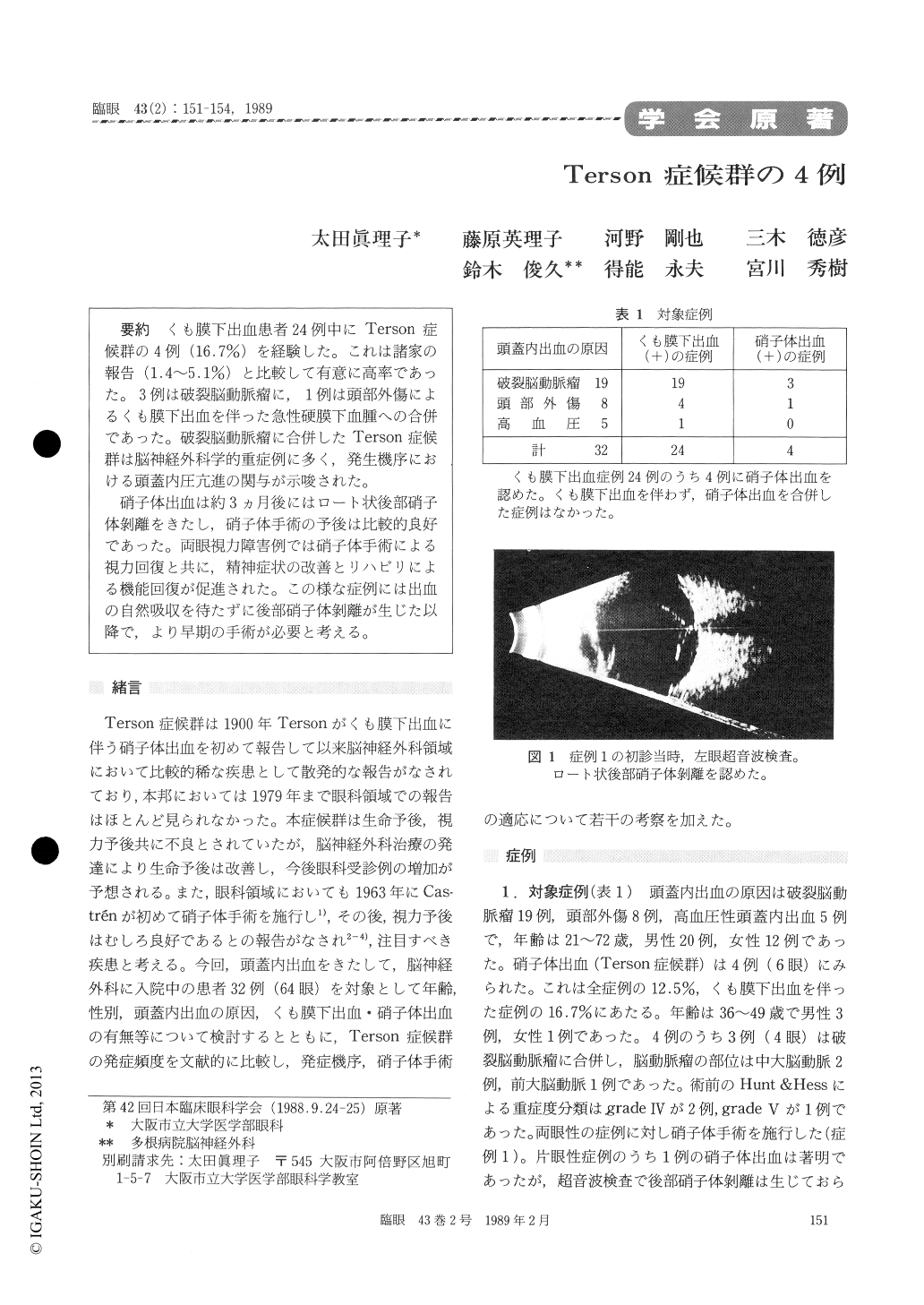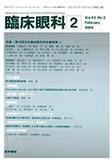Japanese
English
- 有料閲覧
- Abstract 文献概要
- 1ページ目 Look Inside
くも膜下出血患者24例中にTerson症候群の4例(16.7%)を経験した。これは諸家の報告(1.4〜5.1%)と比較して有意に高率であった。3例は破裂脳動脈瘤に,1例は頭部外傷によるくも膜下出血を伴った急性硬膜下血腫への合併であった。破裂脳動脈瘤に合併したTerson症候群は脳神経外科学的重症例に多く,発生機序における頭蓋内圧亢進の関与が示唆された。
硝子体出血は約3ヵ月後にはロート状後部硝子体剥離をきたし,硝子体手術の予後は比較的良好であった。両眼視力障害例では硝子体手術による視力回復と共に,精神症状の改善とリハビリによる機能回復が促進された。この様な症例には出血の自然吸収を待たずに後部硝子体剥離が生じた以降で,より早期の手術が必要と考える。
Through evaluation of 24 patients with subarach-noid hemorrhage, we detected Terson's syndrome in 4 patients. Ruptured intracranial aneurysm was the cause for subarachnoid hemorrhage in 3 cases. Craniocerebral injury resulted in subarachnoid hemorrhage and subdural hematoma in another. The incidence of Terson's syndrome in the present series was thus 17%, a value significantly higher than those in previous reports. Patients with severe systemic manifestations appeared more prone to develop vitreous hemorrhage.
A 44-year-old male in the series developed bilat-eral vitreous hemorrhage. Full visual recovery resulted after pars plana vitrectomy for both eyes. Improvement in vision was followed by disappearance of hallucination and by accelerated recovery in neurological functions. In these cases, vitrectomy in the early stage is recommended after posterior vitreous became detached.

Copyright © 1989, Igaku-Shoin Ltd. All rights reserved.


